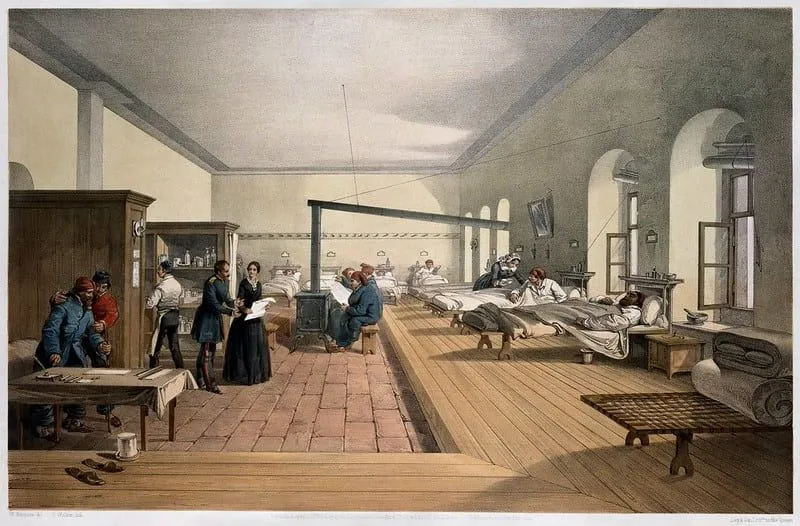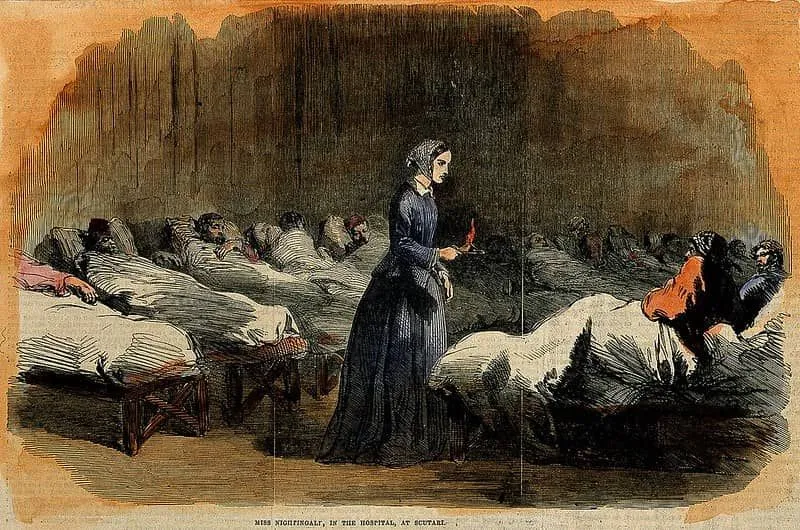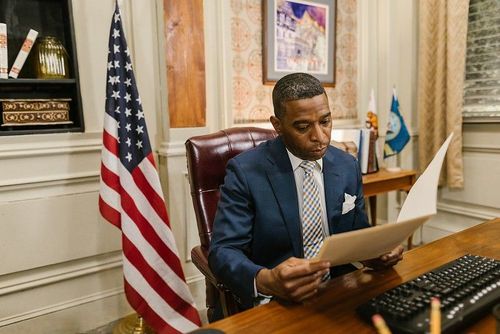FOR AGES 5 YEARS TO 7 YEARS
This Florence Nightingale timeline is the perfect way to learn more about one of the world's most famous nurses.
The World Health Organisation has declared 2020 as the International Year of the Nurse and the Midwife. Here at Kidadl we want to thank all nurses and midwifes for their caring and compassionate work!
What better way to honour the inspirational work of nurses than to teach the next generation all about them! We have put together loads of interesting facts about Florence Nightingale, a famous and hard-working woman, who we certainly should all look up to.
Florence Nightingale was a British nurse, statistician and social reformer, who worked tirelessly to help those around her. She served in wars nursing soldiers back to good health and was always thinking of ways that she could help people. This Florence Nightingale timeline tells you everything you need to know about this inspirational woman, including lots of Florence Nightingale facts for kids.
Florence was born on the 12th May in 1820, that's 200 hundred years ago! She was born in Florence, Italy, which is where she is named after. Soon after, her family moved back to England.
Fun Fact: Florence's sister was also named after an Italian town - Parthenope.
Their father was a wealthy banker and he gave his daughters a good education. He taught his girls subjects such as science, history and maths. This is when Florence fell in love with books.
From a young age, Florence knew that she wanted to do something important with her life. She was studious and organised from a very young age, while her sister just wanted to play.
When she was 16, she believed God spoke to her, and told her to help those suffering. And so, from this moment onward, she wanted to become a nurse.
Florence's father, however, just wanted his daughter to find a respectable man to marry. He did not approve of her decision to become a nurse. But Florence insisted , so she read and read and never gave in. She was determined to do something important in her life.
Her father gave in eventually and let her study at a Christian nursing school in Germany in the year 1851.

Image © Wellcome Images, Wikicommons
After her training in Germany, Florence came back to England to put her good work to practice. In the year 1853, she worked hard to improve the conditions of a women's hospital in London, making lots of important changes.
Nightingale was also a writer and wrote extensively about nursing practices. She penned reports, books and pamphlets. Her book, Notes on Nursing: What It Is and What It Is Not, was used to teach her own students in the nursing school she set up herself in London. She wrote information about nutrition, hygiene and more to help her students.
She was also amazing at maths, and loved using graphics and charts to present her findings. For her work, she became the first woman become a member of the Royal Statistician Society.
For her fantastic work from her home in London, to her dedication to the army abroad, the International Red Cross established the Florence Nightingale Medal in 1912 - one of the highest honours a nurse can achieve.
The Crimean War broke out in the year 1854. The war was between France, England and Turkey on one side versus Russia on the other.
Medical help was needed urgently as soldiers were suffering from injuries from wounds, illness, colds and hunger but there was no one to look after the soldiers. The Minister of War, Sidney Herbet, asked Florence to help because he knew how efficient and hard-working she was. She led a team of nurses to Crimea where they nursed the soldiers back to good health.
When the nurses arrived in Turkey they found that the hospital was in an awful state! It was overcrowded and dirty with many things broken, like the toilet and drains. Because of the unpleasant conditions, disease spread very quickly in the hospital and Florence learnt the importance of hospital cleanliness. Soldier's had to sleep on the floor and didn't even have a blanket!
Florence knew what to do. She bought new medical supplies, paid workmen to clear the drains and cleaned up the wards. She worked tirelessly with her team to improve the conditions to help the army. She bathed the soldiers, dressed their wounds and fed them. This way the Crimean War could be fought effectively and more soldiers were able to safely recover.
She returned home in 1856 and encouraged Queen Victoria to think more about the conditions of the war and how disease could have been prevented. She then set up the Nightingale fund in 1859 to help train more nurses!

Image © Wellcome Images, Wikicommons
While caring for soldiers during the Crimean War, Florence acquired the nickname, 'the lady with the lamp'. This was because of how caring and compassionate she was, especially during such a hard time.
At night time, she would regularly visit the soldiers to ensure they were feeling comfortable and well rested. She would carry her lamp with her as she did, hence the name.
Fun Fact: As many soldiers were severely injured, they were not able to write letters home to their family. So Florence would do it for them. She always went the extra mile and truly cared for her patients.
During the Crimean War, Florence fell ill with Crimean Fever and although she recovered slowly while she was away from home in London, she suffered for many years after. The disease stayed with Florence and she would often be bed bound, some 25 years after because of chronic pain.
She was bed-bound for 11 years due to the pain and illness and she became permanently blind towards the end of her life in 1901. She died on 10 August 1910 and will always be remembered as a pioneer and inspirational figure.
Read The Disclaimer
At Kidadl we pride ourselves on offering families original ideas to make the most of time spent together at home or out and about, wherever you are in the world. We strive to recommend the very best things that are suggested by our community and are things we would do ourselves - our aim is to be the trusted friend to parents.
We try our very best, but cannot guarantee perfection. We will always aim to give you accurate information at the date of publication - however, information does change, so it’s important you do your own research, double-check and make the decision that is right for your family.
Kidadl provides inspiration to entertain and educate your children. We recognise that not all activities and ideas are appropriate and suitable for all children and families or in all circumstances. Our recommended activities are based on age but these are a guide. We recommend that these ideas are used as inspiration, that ideas are undertaken with appropriate adult supervision, and that each adult uses their own discretion and knowledge of their children to consider the safety and suitability.
Kidadl cannot accept liability for the execution of these ideas, and parental supervision is advised at all times, as safety is paramount. Anyone using the information provided by Kidadl does so at their own risk and we can not accept liability if things go wrong.
Kidadl is independent and to make our service free to you the reader we are supported by advertising.
We hope you love our recommendations for products and services! What we suggest is selected independently by the Kidadl team. If you purchase using the buy now button we may earn a small commission. This does not influence our choices. Please note: prices are correct and items are available at the time the article was published.
Kidadl has a number of affiliate partners that we work with including Amazon. Please note that Kidadl is a participant in the Amazon Services LLC Associates Program, an affiliate advertising program designed to provide a means for sites to earn advertising fees by advertising and linking to amazon.
We also link to other websites, but are not responsible for their content.
Was this article helpful?



Browse Category



We’ll send you tons of inspiration to help you find a hidden gem in your local area or plan a big day out.



Check your inbox for your latest news from us. You have subscribed to:
Remember that you can always manage your preferences or unsubscribe through the link at the foot of each newsletter.